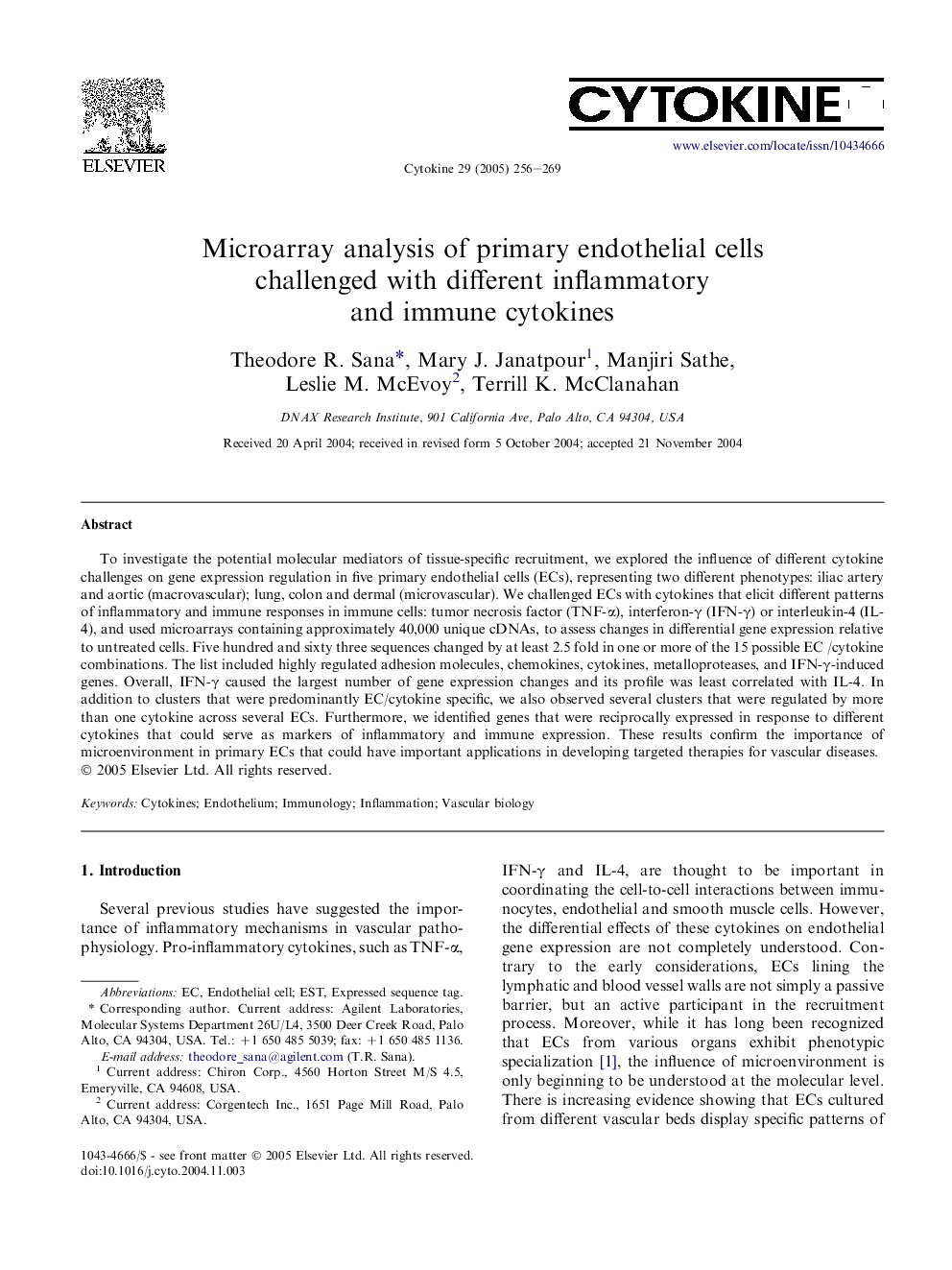| Article ID | Journal | Published Year | Pages | File Type |
|---|---|---|---|---|
| 9110915 | Cytokine | 2005 | 14 Pages |
Abstract
To investigate the potential molecular mediators of tissue-specific recruitment, we explored the influence of different cytokine challenges on gene expression regulation in five primary endothelial cells (ECs), representing two different phenotypes: iliac artery and aortic (macrovascular); lung, colon and dermal (microvascular). We challenged ECs with cytokines that elicit different patterns of inflammatory and immune responses in immune cells: tumor necrosis factor (TNF-α), interferon-γ (IFN-γ) or interleukin-4 (IL-4), and used microarrays containing approximately 40,000 unique cDNAs, to assess changes in differential gene expression relative to untreated cells. Five hundred and sixty three sequences changed by at least 2.5 fold in one or more of the 15 possible EC /cytokine combinations. The list included highly regulated adhesion molecules, chemokines, cytokines, metalloproteases, and IFN-γ-induced genes. Overall, IFN-γ caused the largest number of gene expression changes and its profile was least correlated with IL-4. In addition to clusters that were predominantly EC/cytokine specific, we also observed several clusters that were regulated by more than one cytokine across several ECs. Furthermore, we identified genes that were reciprocally expressed in response to different cytokines that could serve as markers of inflammatory and immune expression. These results confirm the importance of microenvironment in primary ECs that could have important applications in developing targeted therapies for vascular diseases.
Keywords
Related Topics
Life Sciences
Biochemistry, Genetics and Molecular Biology
Endocrinology
Authors
Theodore R. Sana, Mary J. Janatpour, Manjiri Sathe, Leslie M. McEvoy, Terrill K. McClanahan,
